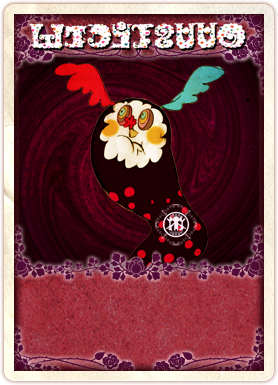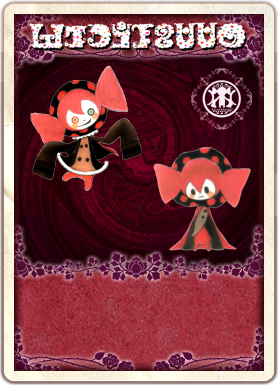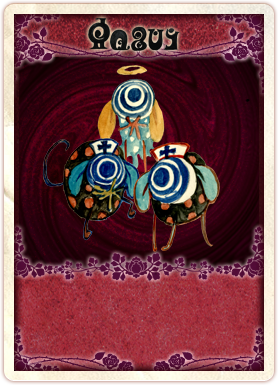Charlotte: Difference between revisions
No edit summary |
N. Harmonik (talk | contribs) No edit summary |
||
| Line 169: | Line 169: | ||
* A [[Episode_3#Witches_and_desserts|charlotte]] is a type of dessert | * A [[Episode_3#Witches_and_desserts|charlotte]] is a type of dessert | ||
** Charlotte's head also bears strong resemblance to a [http://st.houzz.com/simgs/1f012ac300f42382_4-4604/eclectic-cookware.jpg Charlotte Mold], a cooking vessel used exclusively for the baking and forming of desserts | ** Charlotte's head also bears strong resemblance to a [http://st.houzz.com/simgs/1f012ac300f42382_4-4604/eclectic-cookware.jpg Charlotte Mold], a cooking vessel used exclusively for the baking and forming of desserts | ||
* The name Charlotte could also refer to [[ | * The name Charlotte could also refer to [[Wikipedia:Charlotte Buff|Charlotte Buff]], a woman [[Wikipedia:Goethe|Goethe]] unrequitedly loved and that deeply influenced him. The central and homonym character from Goethe's [[Wikipedia:The Sorrows of Young Werther|The Sorrows of Young Werther]] was based on her | ||
* [[ | * [[Wikipedia:Pyotr|Pyotr]] is the Russian form of the given name Peter | ||
**The name Peter simply means 'stone' or 'rock' however given the sweet theme of the barrier - they could be a reference to rock candy | **The name Peter simply means 'stone' or 'rock' however given the sweet theme of the barrier - they could be a reference to rock candy | ||
**[ | **[[wikipedia:Pyotr_Ilyich_Tchaikovsky|Pyotr Ilyich Thaikovsky]] was a Russian romantic period composer who composed scores for ''The Nutcracker'' and ''Swan Lake.'' He also composed '''[[wikipedia:None_but_the_Lonely_Heart_(Tchaikovsky)|"None but the Lonely Heart",]]'' based on a poem by Lev Mei which was in turn translated from Goethe's ''Wilhelm Meister's Apprenticeship.'' | ||
* [[ | * [[Wikipedia:Polina (given name)|Polina]] is also a Russian given name, interpreted either as a short form of the name Apollinaria, or a variant form of the name Paulina | ||
**Polina means 'little stone', which is similar to Pyotr's etymology. | **Polina means 'little stone', which is similar to Pyotr's etymology. | ||
**[ | **[[wikipedia:Polina_Semionova|Polina Semionova]] was a ballerina who once played the lead role in Thaikovsky's ''The Nutcracker.'' | ||
**[ | **[[wikipedia:Pauline_von_Metternich|Pauline von Metternich]] was an Austrian socialite who was important in the promotion of Richard Wagner's work; it was at her request that Napolean III invited Wagner to "substantially amend" his opera ''[[wikipedia:Tannh%C3%A4user_(opera)|Tannhäuser]]'', creating what would be known as the "Paris version", which failed and would become one of the nineteenth century's greatest musical scandals. Wagner also dedicated a piano composition to her | ||
***''Tannhäuser'' "centers on the struggle between sacred and profane love, and redemption through love, a theme running through much of Wagner's mature work." | ***''Tannhäuser'' "centers on the struggle between sacred and profane love, and redemption through love, a theme running through much of Wagner's mature work." | ||
* The [[Runes:Episode_3 | runes reading "MAMI MOGU MOGU GONBO"]] in Charlotte's barrier describe [[Mami Tomoe|Mami]]'s death, as mogu mogu is onomatopoeia for chewing, but also likely reference to a famous educational cooking TV show called [ | * The [[Runes:Episode_3 | runes reading "MAMI MOGU MOGU GONBO"]] in Charlotte's barrier describe [[Mami Tomoe|Mami]]'s death, as mogu mogu is onomatopoeia for chewing, but also likely reference to a famous educational cooking TV show called [[wikipedia:ja:モグモグGOMBO|Mogu Mogu Gombo]]. | ||
** There is no significant difference between the Japanese pronunciations of gonbo and gombo, so gonbo is an alternate romanization. | ** There is no significant difference between the Japanese pronunciations of gonbo and gombo, so gonbo is an alternate romanization. | ||
** Mogu Mogu Gombo aired from 1993 until 2003 and was hosted by two famous comedians (Kobuhei Hayashiya and HIROMI). The main target audience was children, but many adults also enjoyed it. | ** Mogu Mogu Gombo aired from 1993 until 2003 and was hosted by two famous comedians (Kobuhei Hayashiya and HIROMI). The main target audience was children, but many adults also enjoyed it. | ||
Revision as of 22:59, 2 September 2021
This section may contain major spoilers!
Please refrain from reading if you are not yet familiar with all the latest media released.Charlotte (CHARLOTTE) is a witch appearing in episode 3 of the anime.
Charlotte reappears in The Rebellion Story, though she has a slightly different appearance. The other characters call her "Bebe", and she helps the magical girls in their fight against the Nightmares. She is able to switch from witch form to her original magical girl form: Nagisa Momoe, due to being a part of the Law of Cycles.
Charlotte also appears in Madoka Magica Portable, Madoka Magica Mobage, Madoka Magica Online, Madoka Magica: The Battle Pentagram and Magia Record.
Witch Cards
The witch of sweets. Her nature is tenacity. She desires everything. She will never give up. Though she is capable of creating infinite amounts of any dessert she desires, she is unable to make the cheese that she loves most. One could easily catch her off-guard with a piece of cheese. | |||||||||||
The witch of sweets. Her nature is tenacity. She desires everything. She will never give up. Though she is capable of creating infinite amounts of any dessert she desires, she is unable to make the cheese that she loves most. One could easily catch her off-guard with a piece of cheese. | |||||||||||
The witch of sweets. Once dreamt of tenacity. A mysterious creature who suddenly appeared in Mami's home. Was christened "Bebe," but it is actually the witch of sweets who arrived from the Law of Cycles. She was expressionless and silent when she was first encountered, but took on its current appearance out of the blue. A bit loud. Mami made its clothes by hand. Mami resembles someone who appeared in the final nightmare the witch saw. | |||||||||||
Minions
The witch of sweets' minion. It's duty is to search for cheese. However, one shouldn't expect much from it. | |||||||||||
The fleeing witch of sweets and her servants. Their roles are to search for cheese and to nurse the cheese. When saving Homura, the nurse-like servant helped with Mami's trapezes, while the mouse-like servants generally ran circles around Nagisa's position. | |||||||||||
History
Original Anime
Charlotte first appears in Episode 3. Her Grief Seed appears outside the hospital Kyosuke Kamijo is staying in, Madoka notices it whilst leaving with Sayaka. Sayaka stays by the Grief Seed while Madoka goes to find Mami. Mami and Madoka venture into the labyrinth together to save Sayaka and defeat the witch. Polina are shown in the labyrinth but never fought, however Pyotr are. When Mami and Madoka reach the deepest part of the labyrinth, Mami appears to beat the witch Charlotte however the witch reveals she hasn't been defeated by revealing her second form and decapitating Mami. She then proceeds to eat her, killing her. Before the witch can get to the other girls, Homura arrives and kills the witch with her time manipulations skills and explosives.
The Rebellion Story
Charlotte reappears in The Rebellion Story though with a slightly new appearance and the name 'Bebe'. She lives with Mami and joins the girls in their battles. Homura soon realises something's wrong as she remembers Charlotte being their enemy. Bebe quickly reveals herself to Mami to be the magical girl Nagisa Momoe and while fighting Homulilly, explains how she and Sayaka are reborn as part of the law of cycles and act as secretaries for Ultimate Madoka, hence why both of them can use their witch forms, albeit in different ways. Bebe is able to transform from witch form to magical girl form freely, as well as using her witch forms second form - though sometimes with a slightly altered appearance. She is also able to summon Pyotr, however they don't seem to be able to do much. Charlotte's original appearance in Episode 3 makes a cameo as Homura reminisces about witches as well as in photographs of Charlotte turning into Bebe with Mami.
Manga
Charlotte and Bebe reappear in the original manga and Rebellion Manga with little differences.
Charlotte makes an appearance in The Different Story where the scene from Episode 3 plays out with Mami however Sayaka intercepts and saves Mami.
The witch makes cameos in Puella Magi Oriko Magica and its Extra Story. She further appears in Welcome to Café Grief Seed! as the Spitting Witch who acts as an arrogant and rude customer to the cafe.
Madoka Online
The angel-like Poirot is described as specializing in preserving/storing (depending on translation) the cheese.
Madoka Magica Portable
Charlotte and her familiars reappear in Madoka Magica Portable. They appear in Madoka's Route, Mami's Route, Sayaka's Route and Homura's Route. She also serves as the boss on the final floor of the Mysterious witch's barrier: the Sufficiency barrier.
When fighting her, she will always have both her forms as a boss fight. In Madoka's Route, you start as Mami to fight her first form then have to play as Homura for her second form, in line with the anime story. Her Grief Seed can be collected to cleanse a magical girl's Soul Gem during battle.
Magia Record
Charlotte appears as an enemy witch but also as Nagisa Momoe's doppel. Her witch description is the same as the original anime.
In-Game (Normal version) description
The Doppel of attachment. Its form is desserts. The master of this emotion gets attached to people and objects as soon as they pluck her heartstrings. She may behave in a shameful manner at times, but in her heart is a well of deep love. The Doppel does not fuse with its host; rather, it emerges as a mask from her nose, which then covers her face completely. The host does not move while her Doppel is present. Instead she sits completely still and stares as though she were staring at the object of her obsession.
Valentine version description
The Doppel of tenacity. Its form is melted chocolate. The master of this emotion always misidentifies the target of her tenacious attachment. Upon seeing a chocolate cake, she’ll surrender to its luscious brown temptation and try to swallow it whole, but will find her stomach filled with milk-white no-bake cheesecake instead. This Doppel sometimes responds to its master’s desire by deliberately going for the cheesecake in the first place, but on these occasions alone, it finds its stomach filled with actual baked cheesecake.
Pyotr
Minions of the witch of sweets. Their role is to search for cheese. You shouldn’t expect too much from them, though. They came to Kamihama in search of cheese, hailing from a place called Mitakihara. Their faces are actually stamps. They’ll headbutt anything that moves, instantly determining whether or not it’s cheese and marking it with either a “Cheese Approval Stamp” or a “Not-Cheese Stamp”. Since they didn’t have much luck finding cheese in their master’s barrier, they expanded their search radius to outside the barrier. (They got kicked out, in a sense.) Even if they succeed in finding some cheese, though, it’s a little doubtful as to whether they remember the route back home.
MADOGATARI
Pyotr
The witch of sweets' minion. Its duty is to search for cheese. They mill about inside the Labyrinth while emitting mouse-like squeaks. Their faces are stamps, which they use to mark anything that isn't cheese. The sight of them performing bodyslams while bouncing around like rubber balls may seem completely ridiculous, but if you get hit by one of them head-on, you'll end up with more than a couple of broken bones.
Song
One solitary cheese (ひとっこチーズ)
| Original text | Translation |
|---|---|
|
チーズ! チーズ! チーズ! チーズ! チーズ! チーズ! チーズ! チーズ! にっがい チーズ わたしが ほしい |
Cheese! Cheese! Cheese! Cheese! Cheese! Cheese! Cheese! Cheese! Bitter cheese, There's just one cheese |
Observations
- Charlotte's head is shaped like a wrapped sweet, this motif can also be seen on her grief seed
- Watching carefully one can see that when Charlotte's second form gets injured a new Charlotte comes out of the mouth replacing the old as if the layers are being blown away
- A charlotte is a type of dessert
- Charlotte's head also bears strong resemblance to a Charlotte Mold, a cooking vessel used exclusively for the baking and forming of desserts
- The name Charlotte could also refer to Charlotte Buff, a woman Goethe unrequitedly loved and that deeply influenced him. The central and homonym character from Goethe's The Sorrows of Young Werther was based on her
- Pyotr is the Russian form of the given name Peter
- The name Peter simply means 'stone' or 'rock' however given the sweet theme of the barrier - they could be a reference to rock candy
- Pyotr Ilyich Thaikovsky was a Russian romantic period composer who composed scores for The Nutcracker and Swan Lake. He also composed '"None but the Lonely Heart", based on a poem by Lev Mei which was in turn translated from Goethe's Wilhelm Meister's Apprenticeship.
- Polina is also a Russian given name, interpreted either as a short form of the name Apollinaria, or a variant form of the name Paulina
- Polina means 'little stone', which is similar to Pyotr's etymology.
- Polina Semionova was a ballerina who once played the lead role in Thaikovsky's The Nutcracker.
- Pauline von Metternich was an Austrian socialite who was important in the promotion of Richard Wagner's work; it was at her request that Napolean III invited Wagner to "substantially amend" his opera Tannhäuser, creating what would be known as the "Paris version", which failed and would become one of the nineteenth century's greatest musical scandals. Wagner also dedicated a piano composition to her
- Tannhäuser "centers on the struggle between sacred and profane love, and redemption through love, a theme running through much of Wagner's mature work."
- The runes reading "MAMI MOGU MOGU GONBO" in Charlotte's barrier describe Mami's death, as mogu mogu is onomatopoeia for chewing, but also likely reference to a famous educational cooking TV show called Mogu Mogu Gombo.
- There is no significant difference between the Japanese pronunciations of gonbo and gombo, so gonbo is an alternate romanization.
- Mogu Mogu Gombo aired from 1993 until 2003 and was hosted by two famous comedians (Kobuhei Hayashiya and HIROMI). The main target audience was children, but many adults also enjoyed it.
- The cooking and eating themes of the show match Charlotte's themes of sweets and eating Mami. A children's show matches other aspects of the barrier: Charlotte looks like a doll in one form and a clown in the other, she has a tea party setup like what a little girl might arrange, and she fills her barrier with candy
- It's been speculated that Charlotte's real body is the doll that sits across her in the anime, since Homura only manages to defeat her after stepping on it. However, Shinbo denies this in a interview published in the Kikan S magazine, volume 33.
Trivia
- A description in the Production Note reveals that Charlotte obtained "one single cheesecake" in strict accordance with her wish.
- A line in the design for Charlotte's labyrinth in the Official Guidebook says "It's really a delicious cheese cake. My dying mother wanted to eat it, but maybe I should have cured her disease instead. However, that surely wasn't appropriate."
- On the official website, mousing over Charlotte's card changes the image from the first to the second using JavaScript.
- Although official pronunciations of almost all witches' names are undisclosed, "Charlotte" is pronounced "シャルロッテ" (Sharurotte) like a German name (Shar-lot-teh) according to an official product's document.
- Runes in Charlotte's card are styled like biscuits, she is the only witch to have a unique runic font like this
- In Magia Record, Charlotte is the first witch to appear as Doppel and then an enemy witch
Charlotte in Rebellion
- According to the Movie 3 Brochure, Charlotte is called "Bebe" in Rebellion because the other characters can't actually read the runes.
- It's possible that Bebe's name was meant to contrast with Mami's name ("Baby" and "Mommy").
- It is suggested that Charlotte's design was changed to make her more expressive
- According to Witches Guide, Mami found Bebe in her original appearance (looking as Charlotte does) and was quiet. Mami sews Bebe new clothes and over time her appearance continues to change and she becomes even more interactive. This can also be seen in photographs of Bebe in Mami's apartment
- Bebe actually talks to the other characters. When she speaks, bubbles with katakana appear from her mouth, though the noises she makes are just gibberish. The other characters appear to understand her just fine, and subtitles appear to let the viewer know what she's saying
- Bebe is shown to be extremely close to Mami. Mami even says that if she didn't meet Bebe she would have fallen into despair long ago
Gallery
See also
External links
- Charlotte card at official website (Japanese)
- Pyotr card at official website (Japanese)
- Charlotte pixiv fanart
- How to make your own Charlotte!
- Käse, Käse, wo ist die Käse? ("der Käse" would be correct here)
- 【MMD】Charlotte is sleeping /Puella Magi Madoka Magica 魔法少女まどか☆マギカ
- Fan-Made Charlotte Connect Opening. (Puella Magi Ver.)
- Fan-Made Charlotte Connect Opening. (Witch Ver.)




